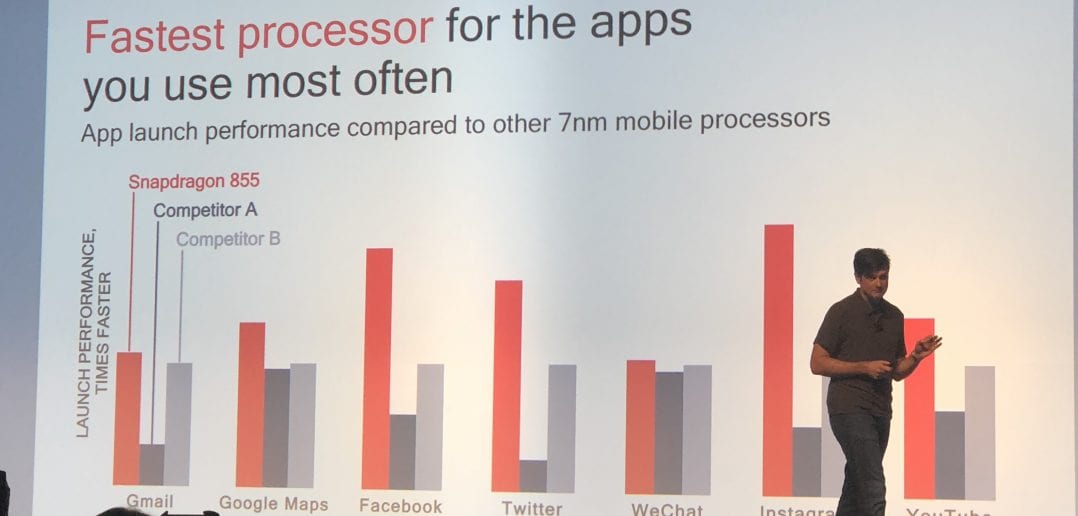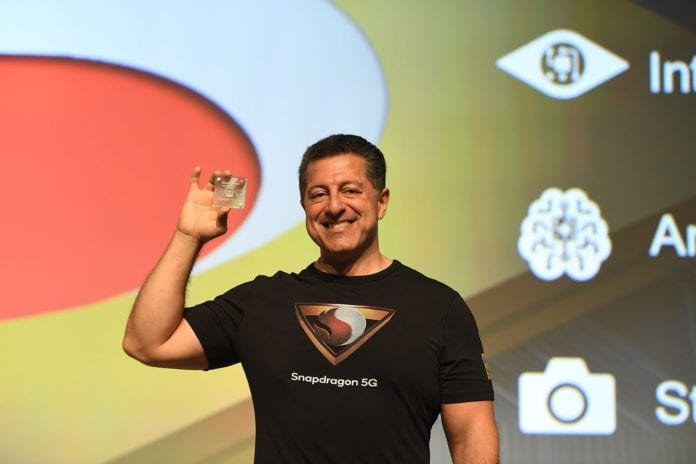Qualcomm SVP discusses SoC development cycle, maintaining competitive advantage
Earlier this month, Qualcomm detailed its new premium-tier mobile SoC, the Snapdragon 855, which will power numerous Android smartphone launches throughout 2019. In a conversation with RCR Wireless News during the company’s Snapdragon Tech Summit in Wailea, Hawaii, SVP and GM of the Mobile Business Unit Alex Katouzian said the new SoC, meant to support early rollouts of 5G, is the culmination of three years of R&D and engineering.
Katouzian said the first step is to define a feature set, process technology and architectural design. “Then, about two years out, we start going into the customer base. We start going through if those features and functions are good enough, if they meet the market requirements. And we reiterate and reiterate and reiterate multiple times until we finalize on something. Eighteen months before we commercially release, we take out a chip then it takes about 12 months or so to get it to full commercial stability.”
Asked if Qualcomm was two years into development on the Snapdragon 855’s successor, Katouzian confirmed that is the case.
A major part of the development cycle is coordination with the larger ecosystem that will rely on what the chip can do.
“We certainly talk to the OEMs and they have a certain point of view. We talk to the carriers, they have a certain point of view. We talk to software vendors, application developers, we talk to component manufacturers like camera, memory, display guys. We talk to game developers, we talk to all the cloud guys. Besides that, we also are very, very active in standards bodies, whether it’s multimedia standards or modem standards. That’s why it takes three years.”
During the event, various product leads laid out the specifics of the Snapdragon 855 with Travis Lanier, a senior director of product management, calling the CPU “a beast,” that boasts a 45% faster CPU and a 20% faster GPU as compared to Snapdragon 845. “The Snapdragon 855 is the fastest processor for the apps you care about,” he said. As compared to competitors who make 7-nanometer mobile processors–Huawei’s Kirin 980 and Apple’s A12 Bionic–Snapdragon 855 shows significant performance gains, as represented in the graph below, when used for go-to apps including Gmail, Google Maps, Facebook, Twitter, WeChat, Instagram and YouTube.

So, given the existing performance advantage, what does it take to maintain and even grow a lead relative to competitors?
Katouzian channeled Intel founder and former CEO Andrew Grove in his response, which was uttered in unison by three other colleagues sitting in on the conversation. “Only the paranoid survive. Any type of disruption, any type of possible hole in our roadmap that could get exposed, anything from technology down to marketing keeps us on our toes all the time.”
“We have honed in on what needs to be accelerated on which core,” he continued. In effect, if we follow what we’ve been saying for a long time–that heterogeneous compute, spreading a function over several cores, is actually much more efficient in executing some fo those instructions, is a much better way than concentrating on one giant core to do everything.”
And, although Qualcomm holds an apparent technological lead, “The competition that we have is also very strong,” Katouzian said. “These vertical OEMs like Samsung and Huawei and Apple, they have a lot of know how designing SoCs for the mobile market. We don’t take them lightly at all. I would say 100% of the team are always paranoid about where we’re going to fall behind, which gaps in our roadmap are going to get exposed. We’re always, always on our toes in terms of what the competition is going to do. We extrapolate where they’re going to be. If you just plan to the competition, you’re always going to be behind. We’re constantly aware of what’s happening and we want to outdo ourselves every time. It’s not a point of complacency. It’s more paranoid than anything else.”

